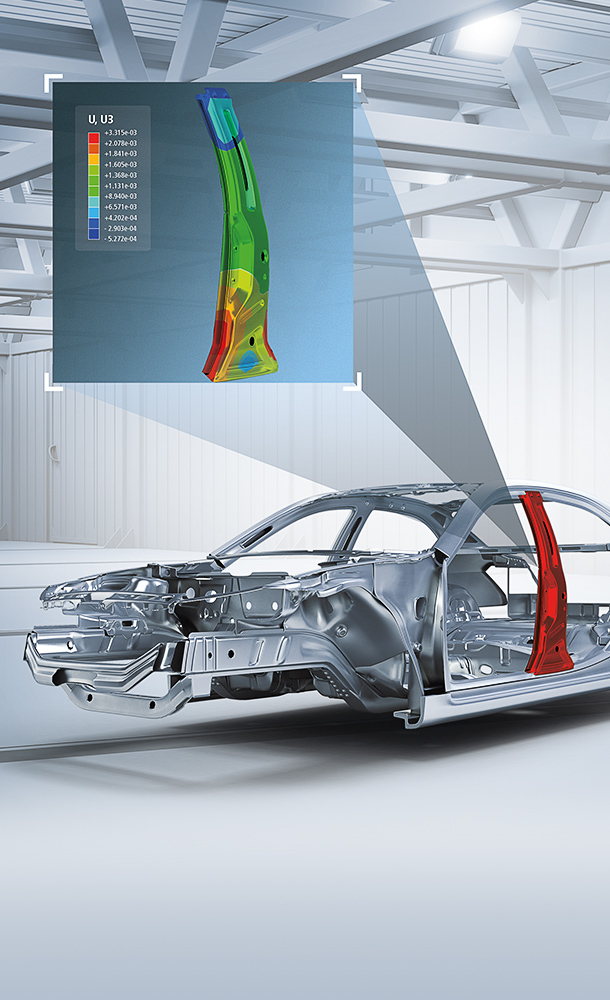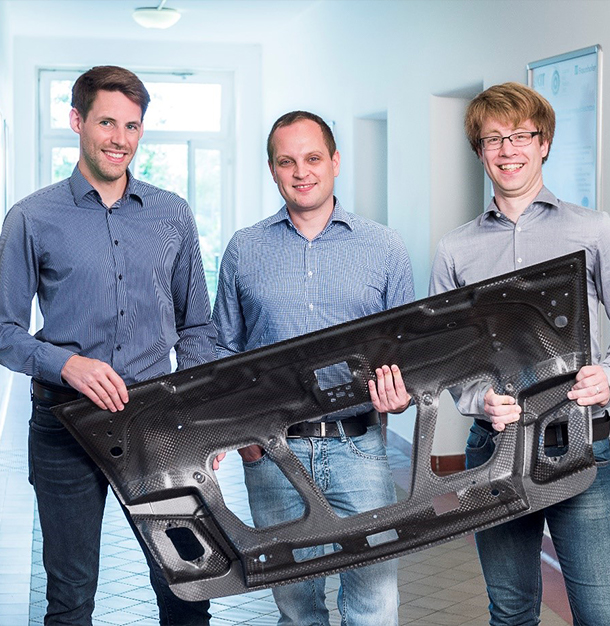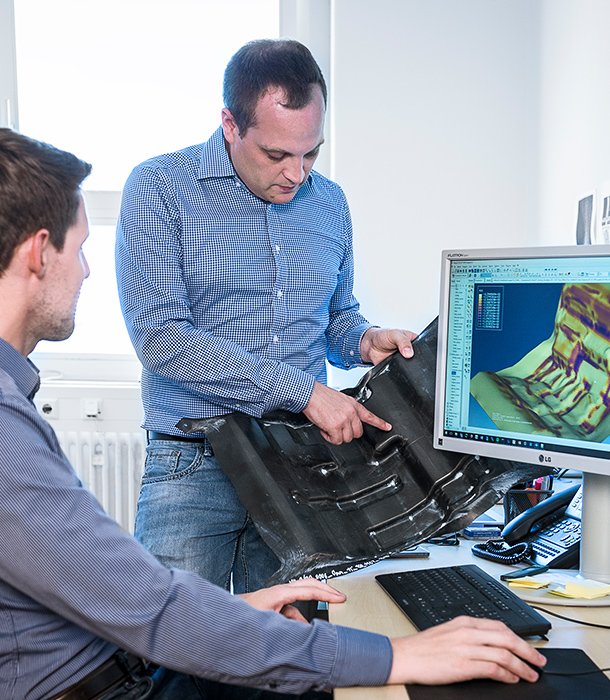The spin-off SIMUTENCE develops software add-ons for the simulation of lightweight components to accelerate processes and minimize risks during subsequent industrial production.

Around 57 million motor vehicles were registered in Germany in 2019 - a new record. The industry must meet this rising demand, as well as the simultaneously growing demands for fuel-efficient vehicles, with sophisticated technology. Alongside the four sectors of energy, industry, buildings and agriculture, transport offers the greatest potential for CO2 savings. Not only politically driven measures such as speed limits on highways, but also the use of lightweight construction technologies can contribute to climate protection: "Lightweight construction strategies in vehicles can significantly reduce weight and thus fuel consumption and CO2 emissions. Fiber composites are suitable for this purpose due to their excellent weight-specific properties," explains Martin Hohberg, co-founder of SIMUTENCE.
However, the industrial production of new lightweight components is often complicated and expensive, as elaborate tools and demonstrators must first be developed to test the components’ efficiency. This is where SIMUTENCE GmbH, a spin-off of KIT, comes into play: It develops simulation methods for fiber composite and lightweight components with continuous prediction and which take process data into account to virtually ensure the manufacturability and resilience of the components.
The founders, Dr.-Ing. Dominik Dörr, Dr.-Ing. Benedikt Fengler, and Dr.-Ing. Martin Hohberg, earned their doctorates in mechanical engineering at KIT's Institute of Vehicle Systems Technology (FAST). "The work on the SMiLE project (see infobox) formed the impetus for our joint professional future. We quickly realized that we complemented each other well and, thanks to Helmholtz Enterprise funding, were finally able to take the step into self-employment in 2019," Hohberg recalls. Even after starting their business, the trio still works closely with KIT: "We conduct basic research activities at FAST and complement these with industry-oriented further developments through our experience as an SME. We particularly like this symbiosis between science and industry," says Dörr. Due to this excellent cooperation, KIT has been involved in the spin-off since 2019.
Through individual consulting, SIMUTENCE supports companies in the virtual design of lightweight components. "We create a digital twin of our customer's lightweight part to optimize the functionalities of the components as well as to predict and minimize risks and costs," Dörr explains. Furthermore, the software covers all steps of the component development process. "Our software maps the entire process chain: From the initial concept of the components, to process simulation and lastly structural simulation, which predicts strength and stiffness."
"It's a great feeling to be able to reduce CO2 emissions and contribute to climate protection through efficient lightweight components in vehicles and the associated weight reduction."
The special feature of SIMUTENCE's simulation methods is that generated data is passed from one simulation step to the next in order to achieve a higher prediction quality. In addition, the software add-ons are compatible with many commercial systems, so they can be connected to the software architecture customers are already using with just a few clicks. "Among other things, in the simulation of the sheet molding compound, i.e., the simulation of component production from flowable material, there is great demand for the complete package of our add-ons for already established simulation software. Comparable products do not yet exist on the market," Hohberg said. "Some of our customers just need an extension to their current software to specifically perform process simulation," adds Dörr.
The founders see great potential for their developments in the national and international automotive and aerospace industries. "Our focus is currently on the European and North American markets. The Asian market may also become interesting for us," Hohberg describes. Dörr and his colleagues are optimistic about the future: "We already have concrete ideas for combining process simulations with artificial intelligence and thus enabling online control of manufacturing processes. In addition, we don't want to rest on our laurels, but rather develop further elements to our software and grow steadily as a company."
STARTING SIGNAL FOR A COMMON FUTURE
The German Federal Ministry of Education and Research (BMBF) funded the project "SMiLE - System Integrative Multi-Material Lightweight Construction for Electromobility" from 2014 to 2017. Together with other partners, including Volkswagen AG, Porsche AG, Thyssenkrupp AG and the University of Stuttgart, the SIMUTENCE founders developed a demonstrator with an innovative mixed body structure for electric vehicles.
FAST played a key role especially in the forming, mold filling and warpage simulation of fiber composite components for the vehicle's underbody. The demonstrator provided information on the lightweight body construction concept against the background of processes suitable for large-scale production.


